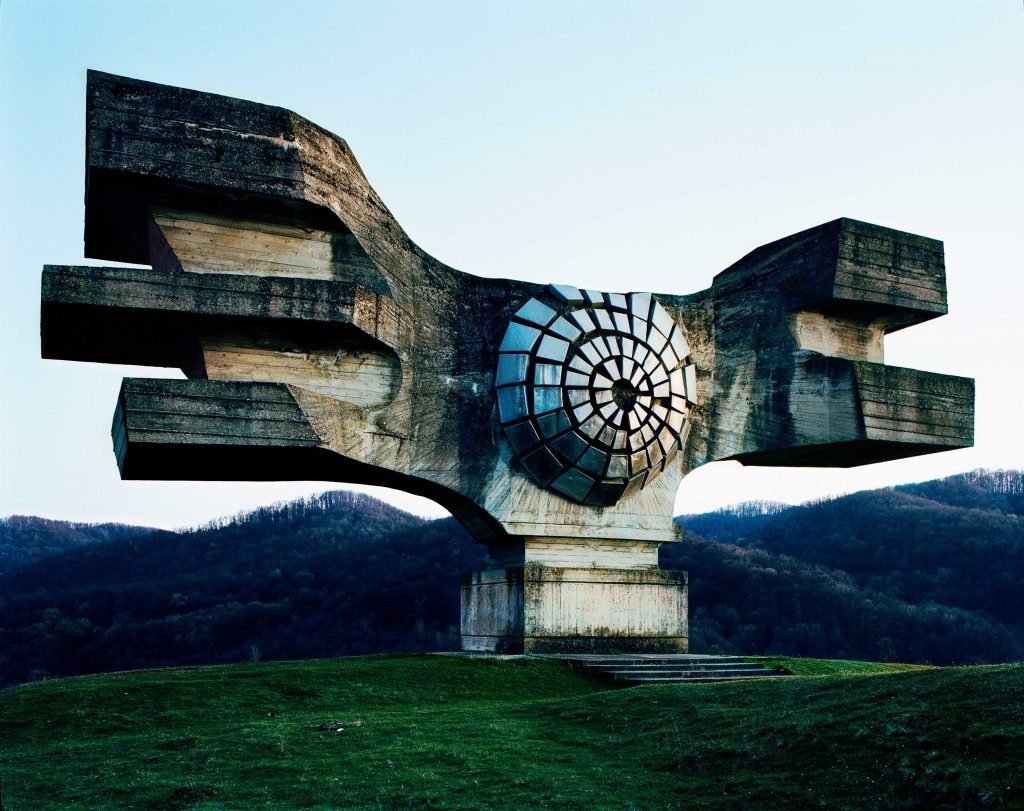
Jan Kempenaers
11 May – 7 Jul. 2012
JAN KEMPENAERS, SPOMENIK
May 11 – July 7, 2012 (prolonged until July 21)
Spomenik – The Monuments of a former Yugoslavia
In the rugged, mountainous regions of the former Yugoslavia, Spomeniks are everywhere. You’ll see them on strategic outcrops, lofty passes and sweeping plateaus: gigantic sculptures, firmly anchored to the rocks. They are objects of stunning beauty. Their abstract geometric shapes recall macro views of viruses, flower-petal goblets, crystals. They are built of indestructible materials like reinforced concrete, steel and granite. Some are solid, others hollow. The largest Spomeniks even afford access to the public, teetering on the boundary where sculpture becomes architecture. Their symbolism has been lost in translation as the visual language has changed, their signals muffled by a shifted worldview. The monuments have been the objects of blind fury, and now of indifference. What remains is pure sculpture in a desolate landscape. They fit seamlessly into the Sixties-era aesthetics of Barbarella movies, Paco Rabanne dresses and Lava lamps. And yet, every single one of them is a memorial monument to the most atrocious events of the Second World War. Hence the choice of a neutral, almost frivolous visual language, whereby the Spomeniks look more like sculptures in an open air museum than the usual war memorials full of military pathos and thundering cannons as were erected at Verdun or Stalingrad. The Antwerp-based photographer Jan Kempenaers undertook a laborious trek through the Balkans to photograph a series of these mysterious objects. We see the powerfull beauty of the monumental sculptures and we catch ourselves forgetting the victims in whose name they were built. This is in no way a reproach to the photographer, but rather attests to the strength of the images. After all, Kempenaers did not set out as a documentary photographer, but first and foremost as an artist seeking to create a new image. An image so powerfull that it engulfs the viewer. He allows the viewer to enjoy the melancholy beauty of the Spomeniks, but in so doing, forces us to take a position on a social issue. The photographs raise the question of whether a former monument can ever function as a pure sculpture, an autonomous work of art, detached from its original meaning.
Excerpts from a text by Willem Jan Neutelings, August 2008
JAN KEMPENAERS | GALLERY EXHIBITIONS

11 May – 7 Jul. 2012